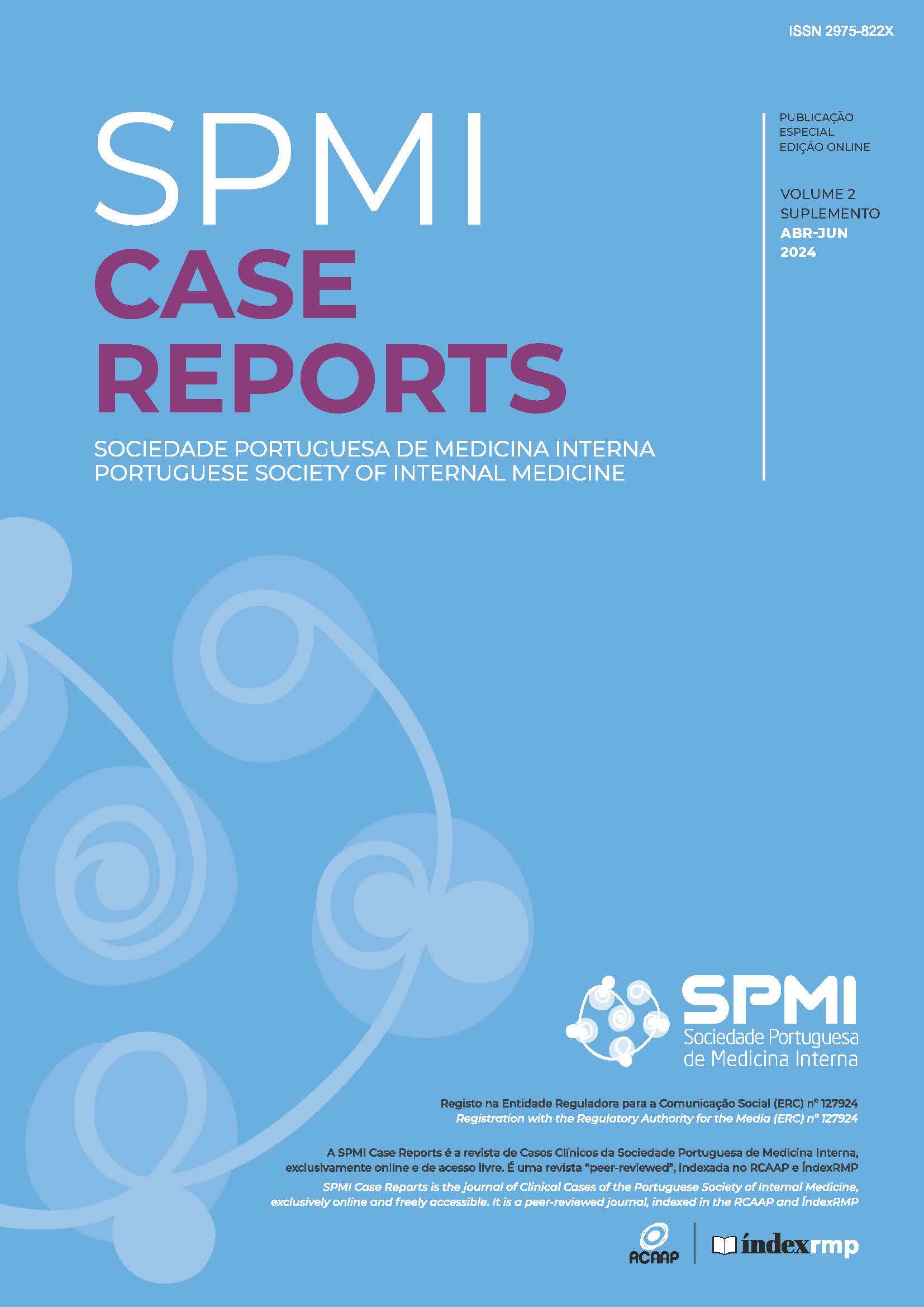A Challenging Case of Miller Fisher Syndrome: The Importance of Clinical Recognition
DOI:
https://doi.org/10.60591/crspmi.42Keywords:
Guillain-Barré syndrome, Miller Fisher Syndrome, PolyradiculoneuropathyAbstract
Guillain-Barré syndrome (GBS) is an immune-mediated
polyradiculoneuropathy with several forms of presentation
being the sensory-motor the most frequent. Miller Fisher
syndrome (MFS) is a rare variant of GBS that is characterized by ophthalmoplegia, decreased osteotendinous reflexes and ataxia. We describe a twenty-five-years-old young man with subacute double vision, difficulty articulating words, muscle weakness and altered sensitivity. On neurological examination, he presented limitation of binocular abduction, peripheral facial dysparesis, dysphonia, dysarthria, dysphagia, decreased cervical strength, proximal-distal tetraparesis, hypo-reflexia and axial ataxia. Complementary diagnostic tests showed results within normal limits. He underwent five days of intravenous human Immunoglobulin and functional rehabilitation program, with excellent therapeutic
response and progressive improvement of neurological
deficits. In short, the clinical overlap between variants of GBS is a reality and, therefore, the early establishment of
the diagnosis and its therapeutic orientation are of vital importance in the prognosis of patients.
Downloads
References
Shahrizaila N, Lehmann HC, Kuwabara S. Guillain-Barré syndrome. Lancet. 2021;397:1214-28. doi: 10.1016/S0140-6736(21)00517-1.
Willison HJ, Jacobs BC, van Doorn PA. Guillain-Barré syndrome. Lancet. 2016 ;388:717-27. doi: 10.1016/S0140-6736(16)00339-1.
Al Othman B, Raabe J, Kini A, Lee AG. Update: the Miller Fisher variants of Guillain-Barré syndrome. Curr Opin Ophthalmol. 2019;30:462-6. doi: 10.1097/ICU.0000000000000611.
Leonhard SE, Mandarakas MR, Gondim FAA, Bateman K, Ferreira MLB, Cornblath DR, et al. Diagnosis and management of Guillain-Barré syndrome in ten steps. Nat Rev Neurol. 2019;15:671-83. doi: 10.1038/s41582-019-0250-9.
Yuki N. Fisher syndrome and Bickerstaff brainstem encephalitis (Fisher-Bickerstaff syndrome). J Neuroimmunol. 2009;215:1-9. doi: 10.1016/j.jneuroim.2009.05.020.
Nagashima T, Koga M, Odaka M, Hirata K, Yuki N. Continuous spectrum of pharyngeal-cervical-brachial variant of Guillain-Barré syndrome. Arch Neurol. 2007;64:1519-23. doi: 10.1001/archneur.64.10.1519.
Nagashima T, Koga M, Odaka M, Hirata K, Yuki N. Clinical correlates of serum anti-GT1a IgG antibodies. J Neurol Sci. 2004;219:139-45. doi: 10.1016/j.jns.2004.01.005.
Gory M, Mégarbane B, Marchal P, Thalamon C, D'Allest AM, Brivet F. Syndrome de Miller-Fisher avec tétraplégie, atteinte respiratoire et dysautonomie. Rev Med Interne. 2001;22:760-1. F doi: 10.1016/s0248-8663(01)00424-6.
Mohammadi SM, Abdi R, Karimi Z, Mortazavi F. Guillain-Barré/Miller Fisher overlap syndrome in a patient after coronavirus disease-2019 infection: a case report. J Med Case Rep. 2022;16:63. doi: 10.1186/s13256-021-03245-y.
Downloads
Published
How to Cite
Issue
Section
Categories
License
Copyright (c) 2024 Inês Almeida, José Miguel Alves, Ana Morgadinho, Inês Antunes Cunha, Joana Andrade

This work is licensed under a Creative Commons Attribution 4.0 International License.







